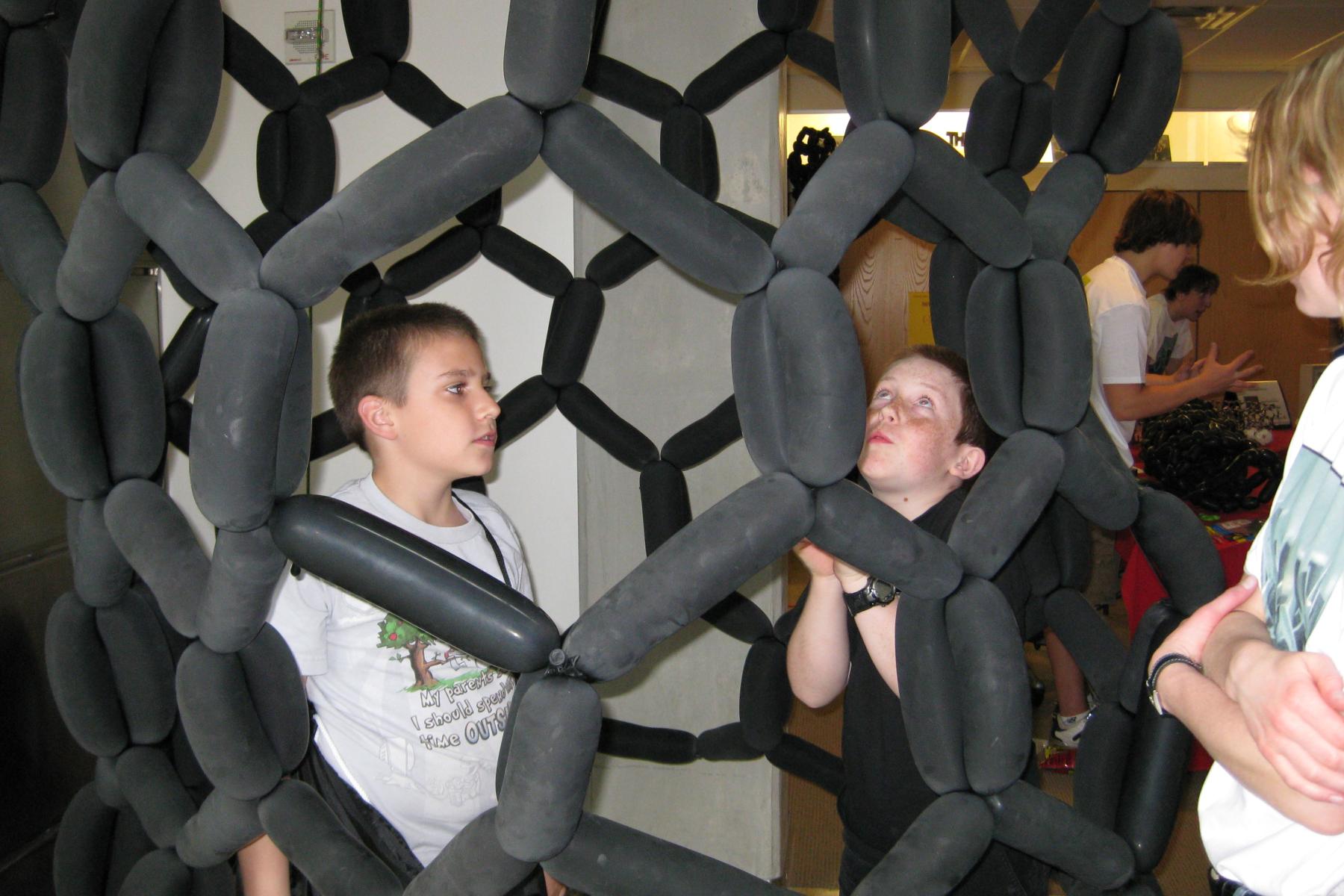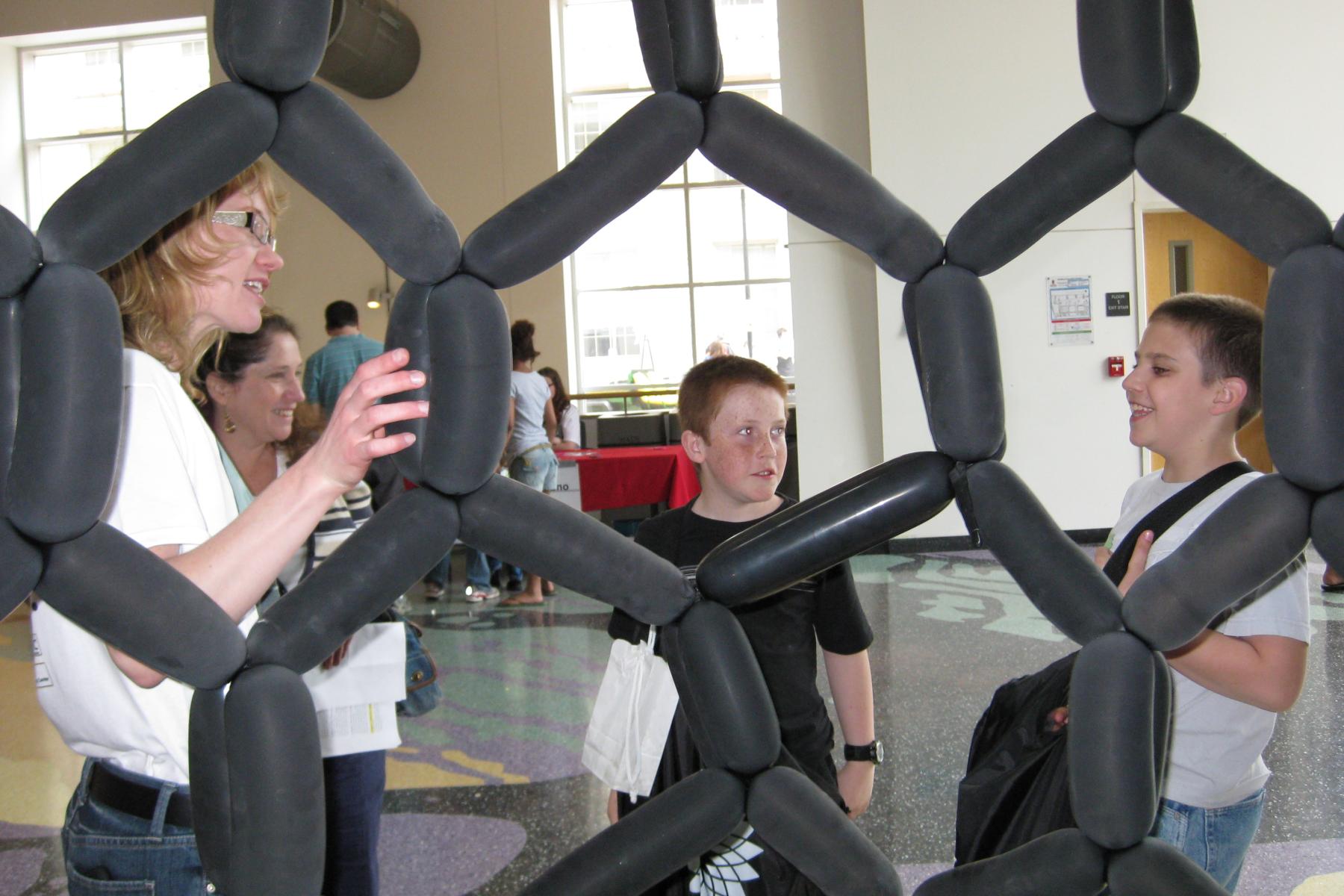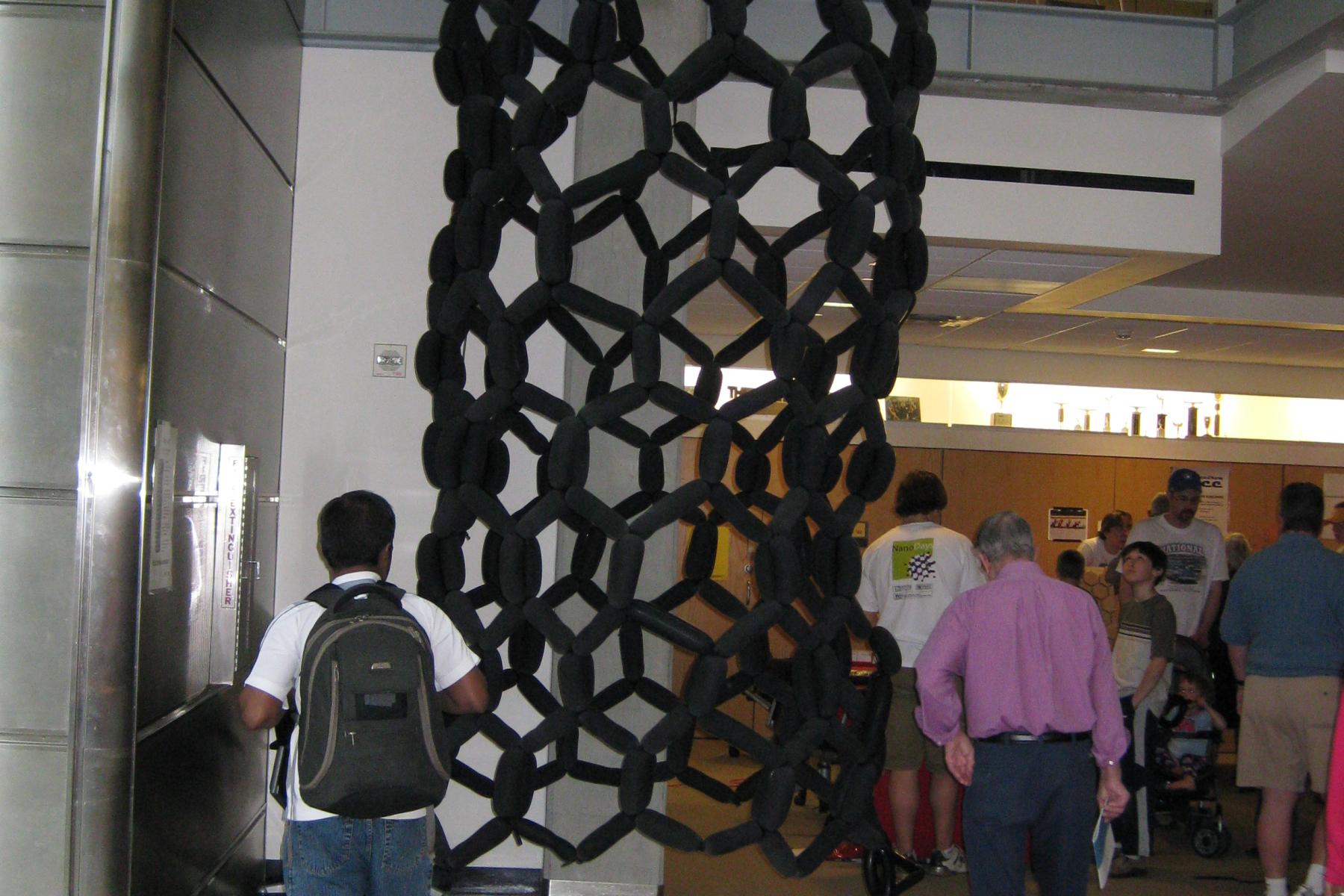DESCRIPTION
"Nanotube Balloons" is a large display made of balloons that can be used to draw visitors to a program on nanotechnology. Visitors observe how the carbon atoms are arranged in a carbon nanotube. The nanotube balloon model can be pre-constructed by museum staff, or visitors can help to build it. The balloon structure provides an intriguing hook for other programs, like "Forms of Carbon" or the "World of Carbon Nanotubes".
DESCRIPTION
"Nanotube Balloons" is a large display made of balloons that can be used to draw visitors to a program on nanotechnology. Visitors observe how the carbon atoms are arranged in a carbon nanotube. The nanotube balloon model can be pre-constructed by museum staff, or visitors can help to build it. The balloon structure provides an intriguing hook for other programs, like "Forms of Carbon" or the "World of Carbon Nanotubes".
TRAINING VIDEOS
OBJECTIVES
BIG IDEA
A carbon nanotube is a form of carbon with an interesting structure and unique properties.
LEARNING GOALS
Carbon nanotubes are nanoscale molecules with an hexagonal structure.
NANO CONTENT MAP
Scientists and engineers have formed the interdisciplinary field of nanotechnology by investigating properties and manipulating matter at the nanoscale.
Credits
University of Wisconsin-Madison Materials Research Science and Engineering Center
Developed for the NISE Network with funding from the National Science Foundation under Award Numbers 0532536 and 0940143. Any opinions, findings, and conclusions or recommendations expressed in this product are those of the authors and do not necessarily reflect the views of the Foundation.
Creative Commons Attribution Non-Commercial Share Alike 3.0 United States (CC BY-NC-SA 3.0 US).
View more details

NISE Network products are developed through an iterative collaborative process that includes scientific review, peer review, and visitor evaluation in accordance with an inclusive audiences approach. Products are designed to be easily edited and adapted for different audiences under a Creative Commons Attribution Non-Commercial Share Alike license. To learn more, visit our Development Process page.





